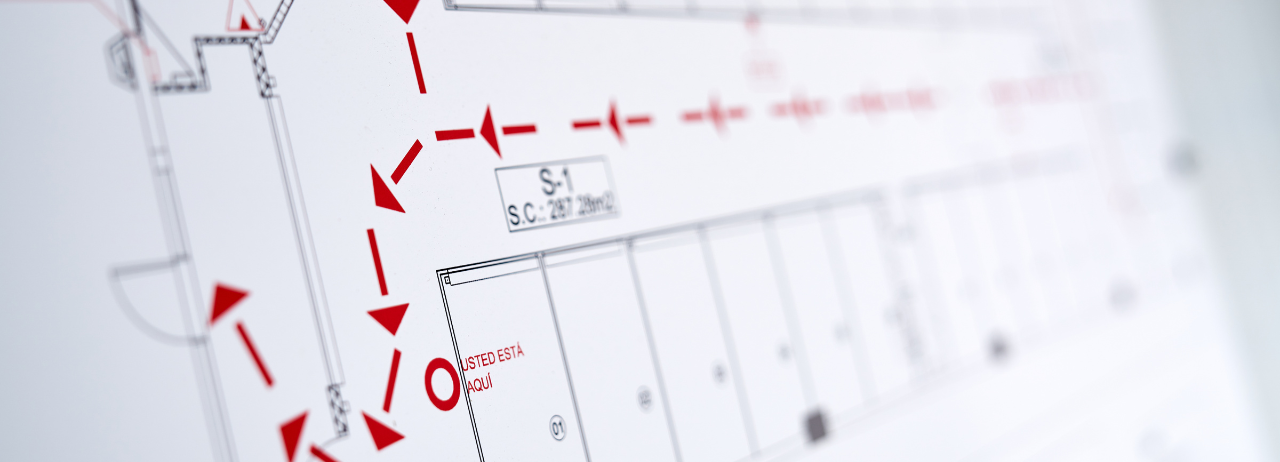Ready for Anything: Crafting Effective Emergency Response Plans
September marks National Preparedness Month, a timely reminder that emergencies—whether natural disasters, workplace incidents, or security events can occur at any moment. This month, employers are encouraged to review and strengthen their emergency plans, ensuring teams are ready not only to respond but to recover effectively.
At the heart of a resilient organization lies a well-crafted Emergency Response Plan (ERP), one that integrates clear communication, defined roles, and practiced procedures. Here’s how to build and implement an ERP that works when it matters most.
- Understand the Context: National Preparedness Month
Established after 9/11 by FEMA and DHS, National Preparedness Month promotes readiness in communities and workplaces. Take this opportunity to conduct a program-wide review, update documentation, and recommit to protecting your workforce and business continuity.
- Six Steps to a Strong Emergency Plan
To develop an effective ERP, follow these essential steps
Risk Assessment
Identify your most likely threats—fire, severe weather, workplace violence, medical incidents, cyber threats, or supply chain disruption. OSHA recommends conducting thorough hazard assessments specific to your industry.
Written Emergency Action Plan
Per OSHA standard 29 CFR 1910.38, employers are required to maintain a written plan outlining evacuation routes, alarm systems, reporting methods, and emergency responsibilities.
Define Roles & Responsibilities
Assign clear roles to emergency response team members, floor wardens, and first-aid leaders. These roles should be practiced regularly to ensure everyone knows their duties in a crisis.
Communication Strategy
Adopt a dependable, multi-channel alert system, which offers mass notifications, two-way messaging, and real-time threat intelligence to keep everyone informed and safe.
Training & Drills
OSHA recommends conducting regular emergency drills and job-specific training sessions. These reinforce protocols and help identify gaps before an actual event occurs.
Review, Refine, Repeat
After each drill or real-world event, conduct a debrief, update the plan, and share lessons learned. Look for template and post-incident review tools to guide improvements.
- Integrating Communication Tools: Why It Matters
When every second counts, clear, immediate communication is essential:
- Timely alerts ensure employees know exactly what to do.
- Two-way systems verify who is safe and who needs help.
- Integration with real-time data improves decision-making.
- Benefits Beyond Emergencies
A robust ERP doesn’t just manage crises; it enhances your entire safety culture:
- Improves risk awareness and identification processes.
- Builds confidence among employees and clients.
- Helps meet compliance standards (OSHA, NFPA, local regulations).
- Reduces downtime and operational losses after incidents.
- Templates and Tools to Accelerate Planning
Consider using:
- AlertMedia’s 11-Step ERP Template for building or refining your response strategy
- OSHA’s Emergency Preparedness and Response page for regulatory and industry-specific guidance
- FEMA’s resources via Ready.gov to align your ERP with national preparedness goals
- Embedding Preparedness Beyond September
To keep readiness active year-round:
- Schedule quarterly drills: evacuation, shelter, lockdown, and medical events.
- Update plans after incidents or changes in facilities or staff.
- Leverage alert systems monthly & test with non-critical notifications.
- Integrate ERP into safety training, from onboarding through refresher courses.
Pearson Safety Solutions: Your Emergency Prep Partner
Pearson Safety Solutions helps companies craft and maintain ERP excellence:
- Risk assessments and plan development
- Role-based response planning
- Implementation of AlertMedia for real-time alerts
- Drill facilitation and communication training
- Post-drill analysis and plan refinement
Ready to launch or enhance emergency response capability? Contact us to put preparedness on your calendar—and ensure your team is ready for anything.
Final Thoughts
By following structured planning, practicing with purpose, and leveraging reliable technology, organizations can reduce vulnerability and maintain resilience in any scenario.
As the saying goes, “Hope for the best, plan for the worst,” but with a solid Emergency Response Plan, you can confidently say: you’re ready for anything.
Looking to strengthen your safety program? Contact us at info@personsafety.com to explore our construction safety training offerings here or contact us to schedule a jobsite consultation.



